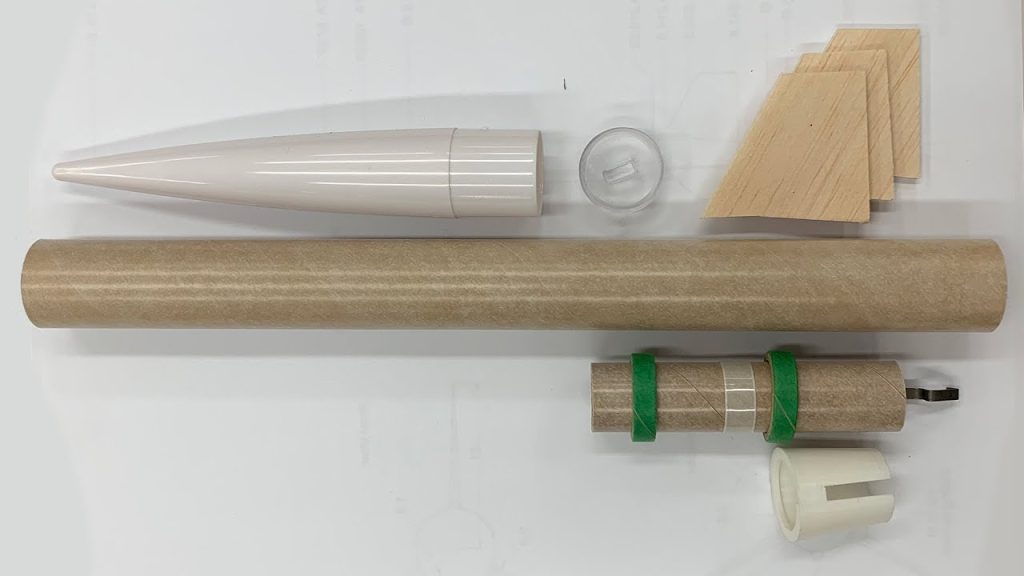Are you looking for a new hobby? If you’re fascinated by science and love rockets, then model rocketry is the right hobby for you. It’s a world where science, creativity and a bit of engineering come together to create something truly exciting. There’s nothing quite like the thrill of launching a rocket you’ve built with your own hands, watching it go up in the sky and then seeing it return safely back to you. It’s fun and it’s also a nice way of learning something new.
What Are Model Rockets?

Nowadays, realistic and well-designed model rockets resemble their real-life counterparts but are significantly smaller and also quite simplified. Unlike actual rockets, they don’t fly into space, however, they do reach impressive altitudes, making it fun for you as a hobbyist. They are made from lightweight materials such as plastic, cardboard and balsa wood and they are safe to build and can be launched in open spaces without any major risk of injury or damage.
Typically, a model rocket consists of a few key components: the body tube, fins, a nose cone and the engine or motor among others. The simplicity of this design makes model rocketry an accessible hobby for beginners while also offering plenty of challenges for those who want to dive deeper into rocket science.
The Science Behind Model Rockets
Many people might be disillusioned with the idea of model rockets due to the complicated way they work, but fear not, it’s not that hard. How does it fly?
A model rocket operates through the combustion of propellant at its base, producing a focused thrust that propels it upwards. This process uses Newton’s Third Law of Motion, which states that for every action there is an equal and opposite reaction. As the propellant is ejected downwards, the rocket experiences an upward force, causing it to accelerate and lift off the ground. The fins create the force required to keep it pointed upward.
Electricity flows through the starter and creates the propellant in the motor and the combustion pressure. A burst at the end of the engine’s operation creates a sudden increase in pressure that allows the nose and body tube of the rocket to separate. The rocket then descends using various recovery methods, with a parachute being the most common option.
This makes sure that the rocket returns safely to the ground in one piece. Without the recovery system, the rocket would plummet to the ground and could be damaged. After you’ve recovered your rocket, you can remove the spent motor, insert a fresh one, put the rocket back together and you’re good to go.
How to Build a Model Rocket
Building the rocket model is when the fun really begins. You can purchase a ready-made kit which is recommended for beginners as it comes with all the necessary components and detailed instructions. But, don’t worry, there’s still plenty of room to make it your own with custom paint jobs or small modifications.
The process typically begins with assembling the body of the rocket. This involves connecting the fins to the body tube and securing the nose cone on the top. The cone is important because it reduces drag, allowing your rocket to cut through the air more efficiently. Inside, you’ll need to install the recovery system that will be deployed when the rocket reaches its highest point.
Finally, you insert the engine into the engine mount at the base of the rocket. The engine will provide the thrust needed for launch. This process may sound technical, but it’s a great way to learn about the principles of physics and it requires patience and precision, but once you get the hang of it, you’ll be able to build your rockets with ease.
Why Is It a Great Hobby?

Model rocketry is a perfect blend of education and entertainment, which is why it has captured the imaginations of people of all ages, from children to adults. One of the greatest aspects of this hobby is that it teaches you a lot about science, but it is a fun way without you even realising it. Through building and launching rockets, you’ll learn about aerodynamics, proportion, physics and even basic engineering.
Another brilliant thing about model rockets is that they offer a sense of accomplishment. There’s something deeply satisfying about seeing your creation blast off and soar high into the sky. Every successful launch feels like a personal victory, and even when things don’t go exactly as planned you’ll learn from your mistakes. Last, but not least is the fact that you can do this hobby with people around you, whether it’s your friends, family or people you’ve met on different clubs and forums dedicated to this hobby.
Model rocketry is an exhilarating and informative pastime that has something to offer for everyone. It’s an excellent way to learn about science, engineering and the laws of physics while having a blast- literally. Whether you’re interested in the building aspect, the launching process or spending time with people who share the excitement, this hobby has a lot to offer.
























